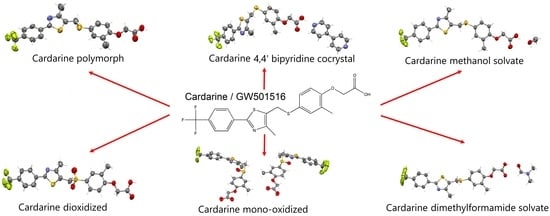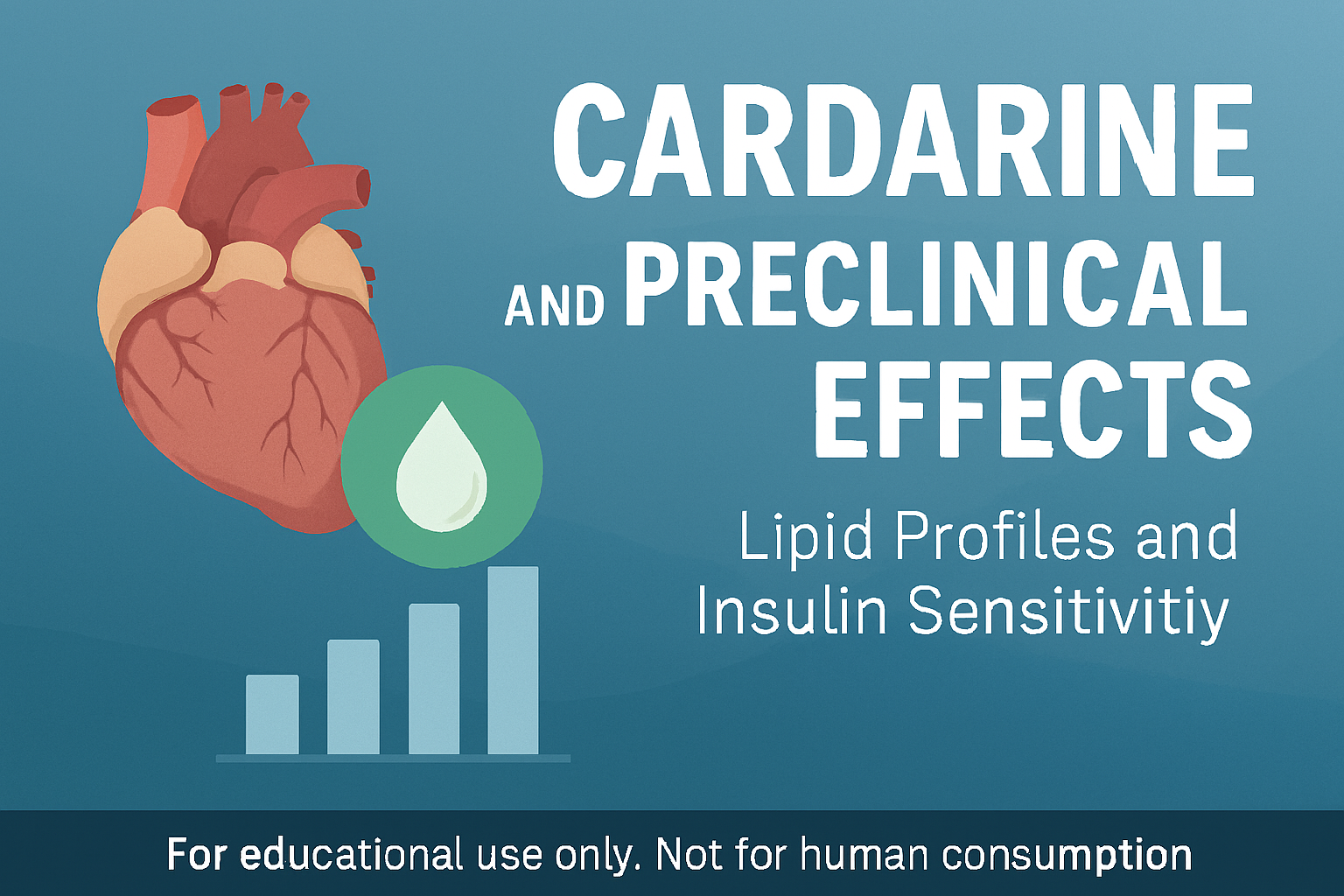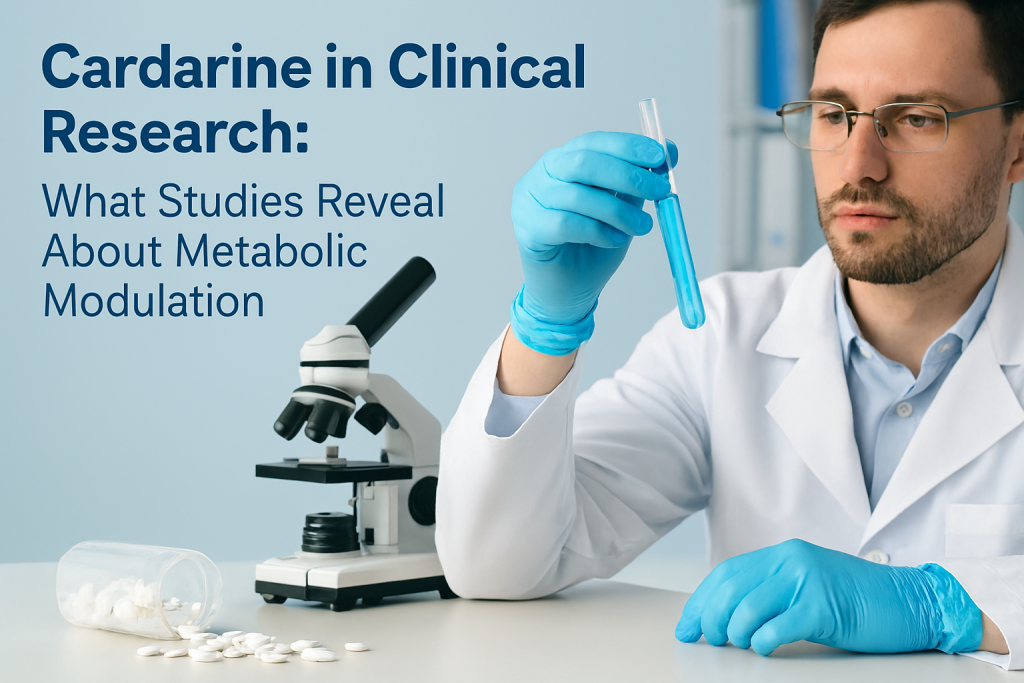Cardarine (GW501516), a synthetic PPARδ agonist, has long intrigued researchers for its potential role in metabolic modulation. Originally developed in the 1990s through a collaboration between GlaxoSmithKline and Ligand Pharmaceuticals, Cardarine was intended to address metabolic disorders such as dyslipidemia and obesity. Although its clinical development was halted due to safety concerns, the compound continues to be studied in preclinical and laboratory settings for its unique biochemical properties.
Mechanism of Action: PPARδ Activation and Energy Regulation

Cardarine functions by binding to the peroxisome proliferator-activated receptor delta (PPARδ), a nuclear receptor involved in regulating genes linked to lipid metabolism, glucose homeostasis, and energy expenditure. Upon activation, PPARδ enhances the expression of genes responsible for fatty acid oxidation in skeletal muscle and liver tissue. This shift promotes the utilization of stored fat as an energy source, which has been associated with increased endurance and improved metabolic efficiency in animal models.
In a widely cited study published in Cell Metabolism, mice treated with GW501516 demonstrated a significant increase in running endurance, attributed to enhanced oxidative capacity in muscle fibers. These findings suggest that Cardarine may mimic some of the physiological effects of exercise, making it a compound of interest in metabolic research.
Preclinical Studies: Lipid Profiles and Insulin Sensitivity

Several preclinical studies have examined Cardarine’s impact on lipid metabolism. In rodent models, administration of GW501516 resulted in reduced levels of LDL cholesterol and triglycerides, alongside elevated HDL cholesterol. These changes were linked to upregulated expression of genes involved in fatty acid transport and oxidation.
Additionally, research published in Endocrinology explored Cardarine’s effects on insulin sensitivity. Treated animals exhibited improved glucose tolerance and reduced markers of insulin resistance, suggesting potential benefits in managing metabolic syndrome. For investigational purposes, compounds such as PureRawz Cardarine (GW-501516) are often used in laboratory settings to replicate these findings under controlled conditions.
Safety Concerns and Regulatory Status
Despite promising metabolic outcomes in preclinical models, Cardarine’s clinical development was discontinued due to concerns about carcinogenicity. Long-term studies in rodents revealed an increased incidence of cancerous growths across multiple organ systems, raising red flags about its safety profile. As a result, GW501516 was never approved for human use and remains classified as a research chemical.
Regulatory agencies have taken a cautious stance. The World Anti-Doping Agency (WADA) has listed Cardarine as a prohibited substance due to its performance-enhancing potential. In the United States, the compound is not approved by the FDA and is sold strictly for research purposes. Its legal status varies globally, with some countries imposing stricter controls on its distribution and possession.
Cardarine in Exercise Physiology Research

Beyond metabolic studies, Cardarine has been investigated for its role in exercise physiology. A study published in The Journal of Physiology examined its effects on mitochondrial biogenesis and endurance capacity. Researchers found that GW501516 enhanced the expression of genes associated with oxidative phosphorylation, leading to improved muscular endurance in mice.
These findings have sparked interest in Cardarine as a potential tool for studying exercise mimetics – compounds that replicate the benefits of physical activity at the molecular level. However, ethical considerations and safety concerns continue to limit its application beyond controlled laboratory environments.
Ethical Sourcing and Research Use
Given its regulatory status, Cardarine is primarily used in laboratory settings under strict compliance protocols. Researchers often obtain GW501516 from chemical suppliers that specialize in research-grade compounds. One such supplier, RCDbio, offers Cardarine for investigational use only, with clear disclaimers regarding its intended purpose. This allows scientists to explore its biochemical effects while adhering to ethical and legal standards.
It is essential for researchers to ensure that sourcing aligns with institutional guidelines and regional regulations. Transparency in labeling, third-party testing, and documentation of purity are critical factors in maintaining scientific integrity.
Future Directions: Metabolic Modulation and Beyond
While Cardarine’s clinical trajectory may have stalled, its role in advancing our understanding of metabolic regulation remains significant. Ongoing research continues to explore PPARδ agonists as potential therapeutic targets for conditions such as type 2 diabetes, obesity, and cardiovascular disease. GW501516 serves as a valuable reference compound in these investigations, helping scientists unravel the complex interplay between nuclear receptors and energy metabolism.
Emerging studies are also examining the broader implications of PPARδ activation, including its effects on inflammation, mitochondrial function, and neuroprotection. These avenues may pave the way for safer analogs or alternative modulators with improved safety profiles.
Conclusion
Cardarine (GW501516) occupies a unique space in metabolic research—offering insights into lipid regulation, endurance physiology, and energy homeostasis. While its clinical use remains prohibited due to safety concerns, the compound continues to inform scientific inquiry in controlled environments. Ethical sourcing from research suppliers like PureRawz enables ongoing exploration, provided that compliance and transparency are upheld.
As with all investigational compounds, the emphasis must remain on rigorous methodology, unbiased interpretation, and responsible dissemination of findings. Cardarine’s story is a reminder of the delicate balance between scientific curiosity and ethical responsibility – a balance that defines credible research.





















